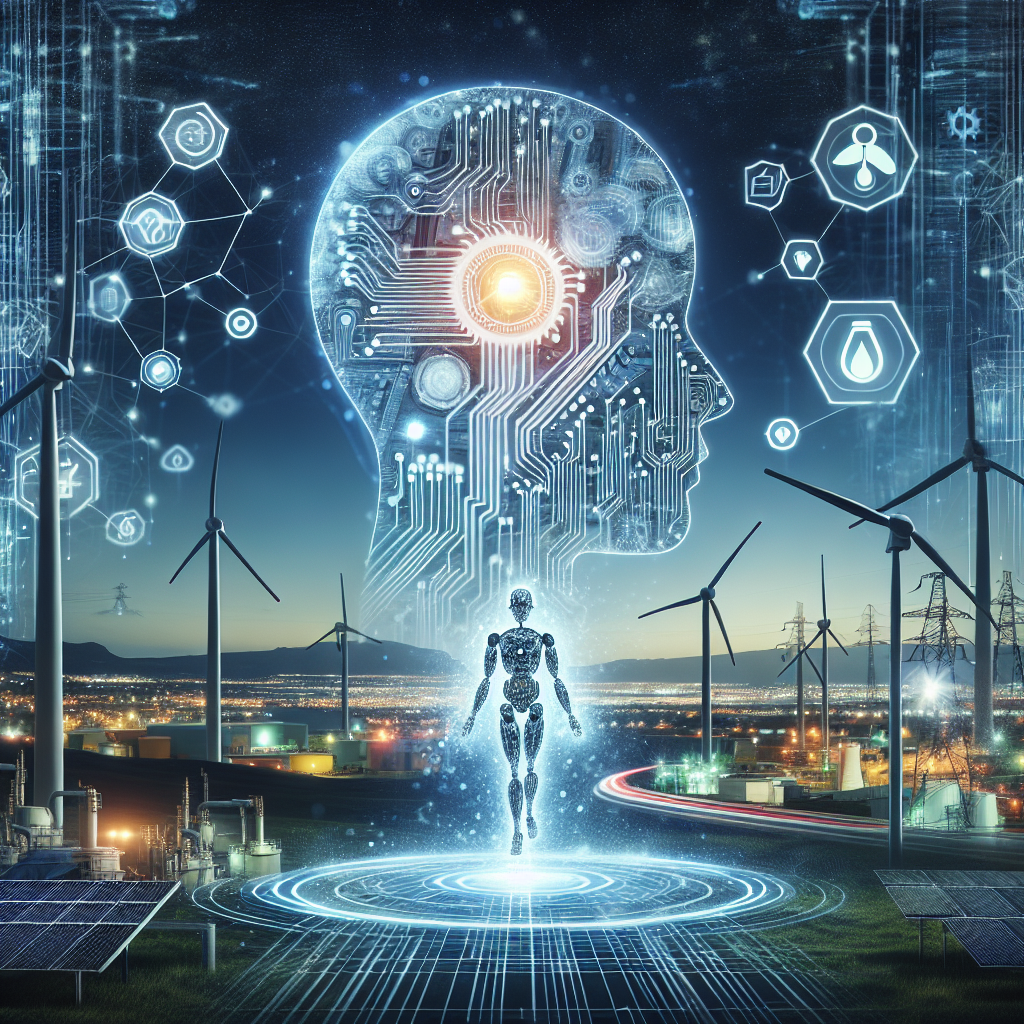Sustainable Energy 2.0: How AI is Transforming the Power Sector
The world is facing a dual challenge when it comes to energy consumption – the need to meet the growing demand for energy while also reducing greenhouse gas emissions to combat climate change. Traditional sources of energy such as coal, oil, and gas are major contributors to global warming, prompting a shift towards renewable sources of energy such as solar, wind, and hydropower. However, the intermittent nature of renewable energy sources poses a challenge in terms of reliability and efficiency.
Enter Artificial Intelligence (AI), the game-changer in the energy sector. AI technology is revolutionizing the power sector by optimizing energy production, distribution, and consumption, making the transition to sustainable energy sources more feasible and efficient. From predictive maintenance to energy forecasting, AI is enhancing the efficiency and sustainability of the power sector in ways never seen before.
AI in Energy Production
One of the key areas where AI is transforming the power sector is in energy production. AI algorithms are being used to optimize the operation of renewable energy sources such as solar and wind farms. By analyzing data from sensors and weather forecasts, AI can predict the output of renewable energy sources and adjust production accordingly. This not only maximizes energy production but also minimizes waste and reduces costs.
AI is also being used to optimize the performance of traditional power plants. By analyzing vast amounts of data in real-time, AI can identify inefficiencies and potential problems before they occur, allowing for proactive maintenance and reducing downtime. This not only improves the reliability of power plants but also extends their lifespan and reduces maintenance costs.
AI in Energy Distribution
Another area where AI is making a significant impact is in energy distribution. The traditional energy grid is a one-way system that delivers electricity from power plants to consumers. However, as the demand for renewable energy sources grows, the energy grid is becoming more complex and decentralized. AI technology is helping to manage this complexity by optimizing the distribution of energy from multiple sources to consumers in real-time.
AI algorithms are being used to forecast energy demand and adjust the distribution of energy accordingly. By analyzing data from smart meters and sensors, AI can optimize the flow of energy through the grid, reducing waste and improving efficiency. This not only reduces costs but also enhances the reliability and resilience of the energy grid, making it more responsive to fluctuations in supply and demand.
AI in Energy Consumption
AI is also transforming the way energy is consumed. Smart devices and appliances are becoming increasingly common in homes and businesses, allowing for more efficient and sustainable energy consumption. AI algorithms are being used to analyze data from these devices and optimize their operation to reduce energy usage and costs.
For example, AI can analyze patterns of energy consumption in a building and adjust the temperature, lighting, and other systems to optimize energy efficiency. By learning from past behavior and adapting to changing conditions, AI can reduce energy waste and lower utility bills.
FAQs
Q: How is AI helping to reduce greenhouse gas emissions in the power sector?
A: AI is helping to reduce greenhouse gas emissions in the power sector by optimizing the production, distribution, and consumption of energy. By maximizing the output of renewable energy sources and reducing waste in traditional power plants, AI technology is helping to shift towards a more sustainable and low-carbon energy system.
Q: What are some examples of AI applications in the power sector?
A: Some examples of AI applications in the power sector include predictive maintenance of power plants, optimization of energy distribution through the grid, and analysis of energy consumption patterns in buildings. AI technology is also being used to forecast energy demand, manage renewable energy sources, and improve the efficiency of energy storage systems.
Q: How can AI help to make the energy grid more resilient and reliable?
A: AI technology can help to make the energy grid more resilient and reliable by optimizing the flow of energy through the grid, managing fluctuations in supply and demand, and identifying potential problems before they occur. By analyzing vast amounts of data in real-time, AI can improve the efficiency and reliability of the energy grid, making it more responsive to changing conditions and reducing downtime.
In conclusion, Sustainable Energy 2.0 is redefining the power sector with the help of AI technology. By optimizing energy production, distribution, and consumption, AI is making the transition to sustainable energy sources more feasible and efficient. From predictive maintenance to energy forecasting, AI is revolutionizing the power sector in ways that were once thought impossible. As the world continues to grapple with the challenges of climate change, AI offers a promising solution to reduce greenhouse gas emissions and create a more sustainable energy future.

